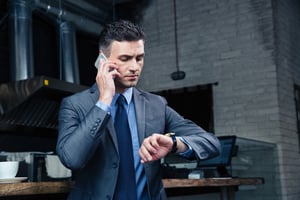August 10, 2018
 The huge accounting firm PwC has announced it is going “Mobile First” for 18,000 of its employees in the UK, say media reports.
The huge accounting firm PwC has announced it is going “Mobile First” for 18,000 of its employees in the UK, say media reports.
A Mobile First communications strategy involves making mobile phones into the primary communications tools for employees.
“It is all about changing working practices – staff are a lot more agile and flexible. They may be working for clients or working from home. And offices are now more open-plan, and with hotdesking the use of landlines is something we just don’t do any more.”
PwC is a high-profile example of companies that are increasingly turning to mobile devices to enhance worker productivity and operational efficiency.
The Mobile Unified Communications Foundation
A key aspect of making the change to Mobile First communications is to ensure that employees on mobile devices can operate business communications features and the more advanced communications applications that Unified Communications makes possible.
Mobile Unified Communications is the strategy of turning mobile phones into the equivalent of in-office UC phones and can be a central component of a Mobile First program.
Mobile-X from Tango Networks is a key enabling service for modern business communications, including Mobile Unified Communications, mobile workforce communications, and programs for remote working, work from home, telecommuting and business continuity. The service brings next-generation fixed mobile convergence technologies to communications for the distributed workforce.
Picture Mobile UC use cases such as:
- A doctor at home can receive an urgent call about a patient consult and can call the patient back using her mobile phone without exposing her personal number.
- A customer service representative can instantly help a customer calling with an urgent problem by conferencing in a technical troubleshooting specialist, even if the specialist is on his personal mobile phone at the coffee shop.
- A financial services firm representative receives a call on his mobile phone from a client requiring a time-sensitive transaction, and the representative’s call is captured and recorded to meet compliance requirements.
- A customer sends a text message to a company’s customer service number and receives a reply back from a customer service representative quickly answering the customer’s question.
These are examples of how mobile-enabled UC can significantly change how companies operate. Now communications and operational efficiencies are no longer dependent on an employee’s presence at a desk.
Join our upcoming webinar about the evolution of enterprise mobility:
"Second Wave Mobility" is now taking hold in enterprises around the world. Registration is open for an upcoming webinar on evolving enterprise mobility featuring Raúl Castañón-Martínez of 451 Research.

